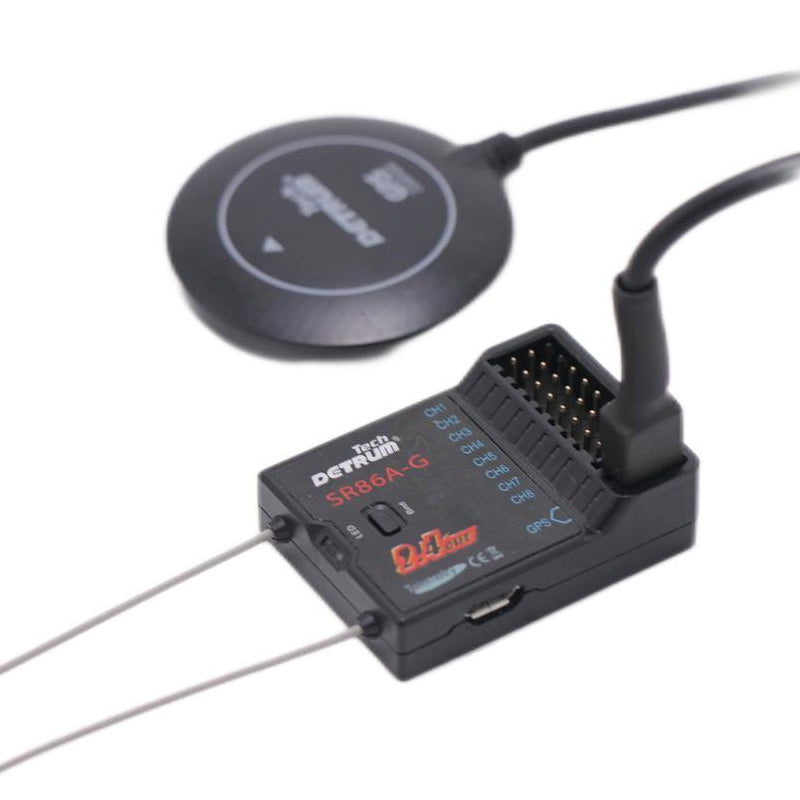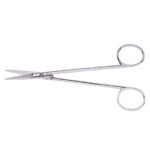Selecting the right receiver for your RC airplane is critical to ensure reliable performance, smooth control, and ultimately, the safety of your model. Whether you’re a beginner looking for a basic setup or an experienced pilot aiming to optimize flight performance, understanding the different types of receivers, frequency options, and compatibility factors is key.
In this guide, I’ll share insights on choosing a receiver, provide an FAQ section, and highlight my own experience using the Detrum SR86A-G Autopilot Telemetry Receiver, equipped with GPS and compatible with the Gavin-8C/Blitz transmitter. This receiver has been a valuable asset in my RC flights, offering stability and added features I’ve come to rely on. Let’s dive into the essentials of receiver selection.
What is an RC Receiver?
An radio control receiver is the onboard unit that receives control signals from the transmitter, translating them into actions such as throttle control, elevator pitch, rudder, and more. A good receiver provides strong, uninterrupted signal reception and allows for features like gyro stabilization, telemetry, and GPS tracking. Here are some key factors to consider when choosing a receiver.
1. Understanding Receiver Frequency Options
Receivers operate on specific radio frequencies, which must match the transmitter to ensure reliable communication. Here are some common options:
- 2.4GHz: The most popular frequency for RC applications due to its long range and resistance to interference. This frequency uses spread spectrum technology, which ensures multiple pilots can operate simultaneously without signal clashes.
- 27MHz and 72MHz: Though less common today, these frequencies were widely used in earlier RC models. They offer a solid range but are more prone to interference.
When choosing a receiver, confirm it operates on the same frequency band as your transmitter, and ensure it is DSMX or compatible with the protocols of your transmitter.
2. Channel Requirements
Receivers come in different channel options, generally ranging from 4 to 18 channels. The number of channels you need depends on your aircraft’s complexity. Here’s a quick guide:
| Aircraft Type | Channels Needed |
|---|---|
| Basic trainer or glider | 4–6 channels |
| Intermediate aerobatic planes | 6–8 channels |
| Advanced planes with retracts and flaps | 8–12 channels |
| Complex setups (e.g., jets) | 10+ channels (for added controls) |
Most sport planes operate well with 6–8 channels, but having a few extra channels is beneficial for adding features down the line.
3. Special Features to Consider
Receivers today are packed with features that can enhance flight stability and safety. Here are a few popular options:
- Gyro Stabilization: Integrated gyros can greatly improve stability, especially in windy conditions. This feature is beneficial for both beginners and advanced pilots.
- Autopilot Modes: Some receivers offer autopilot functions for improved stability and return-to-home capabilities. For example, the Detrum SR86A-G receiver I use has an autopilot and GPS, which help keep my flights steady and my plane recover from unexpected turns.
- Telemetry: Receivers with telemetry capabilities can send real-time data to the transmitter, such as battery voltage, signal strength, and GPS position. This is essential for monitoring and preventing potential issues mid-flight.
4. Compatibility with Transmitter
Ensure that your receiver is compatible with your transmitter’s brand and protocol. Some brands use specific protocols (like DSM2/DSMX for Spektrum or FASST for Futaba), which require matching protocols to function. Here are a few popular RC brands and their protocols:
- Spektrum: DSMX/DSMR
- Futaba: FASST, T-FHSS
- Detrum: Used in the Gavin-8C/Blitz line
- FrSky: ACCST, ACCESS
Double-check compatibility with your specific transmitter model before purchasing.
5. My Experience with the Detrum SR86A-G Autopilot Receiver

The Detrum SR86A-G Autopilot Telemetry Receiver has been an essential tool for my RC flights. I chose this receiver because it combines GPS with an autopilot feature, which makes a noticeable difference in stabilizing the plane. With the GPS module, I’ve been able to maintain solid positioning during challenging weather conditions, and the telemetry allows me to keep an eye on important data right from my transmitter. The receiver’s performance has impressed me, offering stable communication with my Gavin-8C/Blitz transmitter.
In particular, I appreciate the autopilot’s ability to adjust my plane’s orientation and provide a smoother flight path during windy conditions. For anyone flying larger or heavier models, having a receiver with integrated autopilot and GPS can make a world of difference.
6. FAQ: Choosing the Right RC Receiver
Q: What is the best frequency for RC receivers?
A: The 2.4GHz frequency is generally the best choice due to its range and resistance to interference. However, if you’re operating in a highly crowded 2.4GHz area, a different frequency may be suitable.
Q: How many channels do I need for my RC plane?
A: Basic trainers need about 4–6 channels, while more advanced planes may require 8–12 channels, especially if you’re adding features like retracts and flaps.
Q: Do I need a gyro-stabilized receiver?
A: Gyro stabilization is optional but beneficial, especially in windy conditions. Beginners often find it easier to handle with a gyro, while advanced pilots enjoy smoother performance in aerobatic flights.
Q: What’s the advantage of telemetry in a receiver?
A: Telemetry sends real-time data back to your transmitter, allowing you to monitor battery levels, signal strength, and even GPS location. It’s an invaluable feature for long-range flights.
Q: Can I use different brands of receivers and transmitters?
A: Most receivers and transmitters are brand-specific due to their unique protocols. However, some multi-protocol transmitters can work with various receivers, offering more flexibility.
Conclusion
Choosing the right receiver is a significant decision that can impact your overall flying experience. Focus on factors such as frequency compatibility, the number of channels, and special features like stabilization, telemetry, and GPS. With these considerations in mind, you’ll be able to select a receiver that enhances both the performance and reliability of your RC plane.
For advanced stability and ease of control, I highly recommend the Detrum SR86A-G Autopilot Receiver with GPS for those using compatible transmitters like the Gavin-8C. It has given me reliable performance and features that enhance my flying experience, making it an excellent choice for intermediate to advanced pilots.
By considering these factors, you can make an informed choice and enjoy a more responsive and controlled RC flying experience.


















































